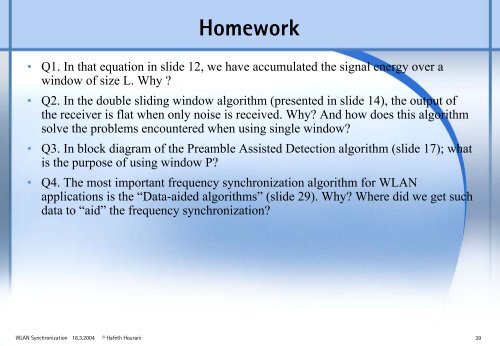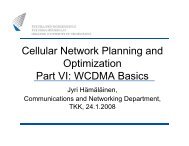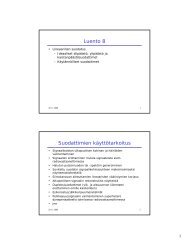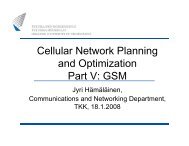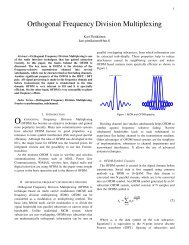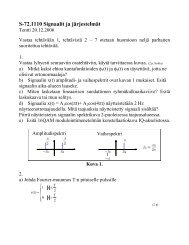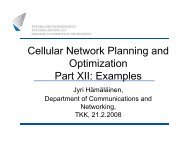Synchronization in WLAN
Synchronization in WLAN
Synchronization in WLAN
You also want an ePaper? Increase the reach of your titles
YUMPU automatically turns print PDFs into web optimized ePapers that Google loves.
Homework<br />
• Q1. In that equation <strong>in</strong> slide 12, we have accumulated the signal energy over a<br />
w<strong>in</strong>dow of size L. Why ?<br />
• Q2. In the double slid<strong>in</strong>g w<strong>in</strong>dow algorithm (presented <strong>in</strong> slide 14), the output of<br />
the receiver is flat when only noise is received. Why? And how does this algorithm<br />
solve the problems encountered when us<strong>in</strong>g s<strong>in</strong>gle w<strong>in</strong>dow?<br />
• Q3. In block diagram of the Preamble Assisted Detection algorithm (slide 17); what<br />
is the purpose of us<strong>in</strong>g w<strong>in</strong>dow P?<br />
• Q4. The most important frequency synchronization algorithm for <strong>WLAN</strong><br />
applications is the “Data-aided algorithms” (slide 29). Why? Where did we get such<br />
data to “aid” the frequency synchronization?<br />
<strong>WLAN</strong> <strong>Synchronization</strong> 16.3.2004 © Hafeth Hourani 39


